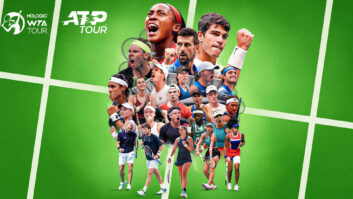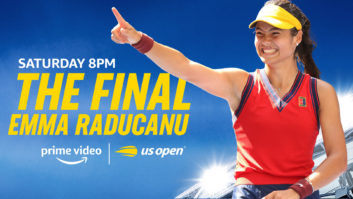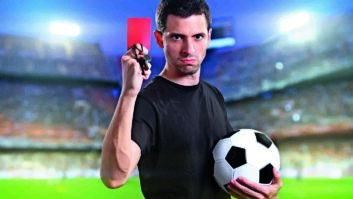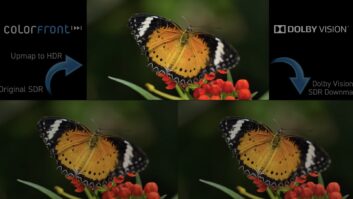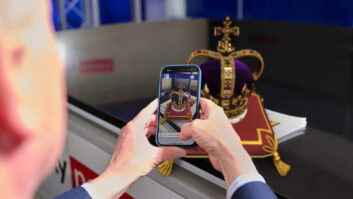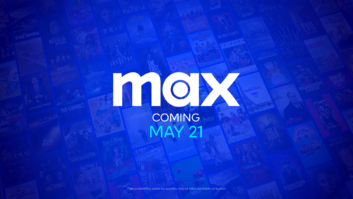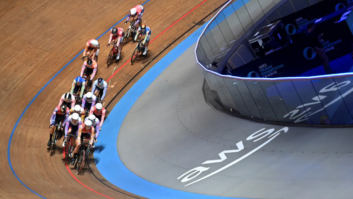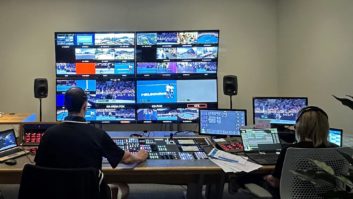As part of its coverage of this year’s US Open, Eurosport is teleporting players from New York to its studio in London.
The broadcaster’s coverage of this year’s tournament is being hosted from its innovative Cube studio, first employed during the Winter Olympics in 2018. The new Cube is based on the same technology as its predecessor, although one of the walls which has been removed to give the production team better camera angles. “What we found in PyeongChang was it was a very, very new product and for production to use it, it took a very long time,” Alex Dinnin, head of Graphics and Innovation, Eurosport, tells TVBEurope.
“So, after the Winter Olympics, we went back to the drawing board and worked out how we could make these things quicker. We moved into a much more real-time environment where things can be called on just by the push of a button on a mixer.”
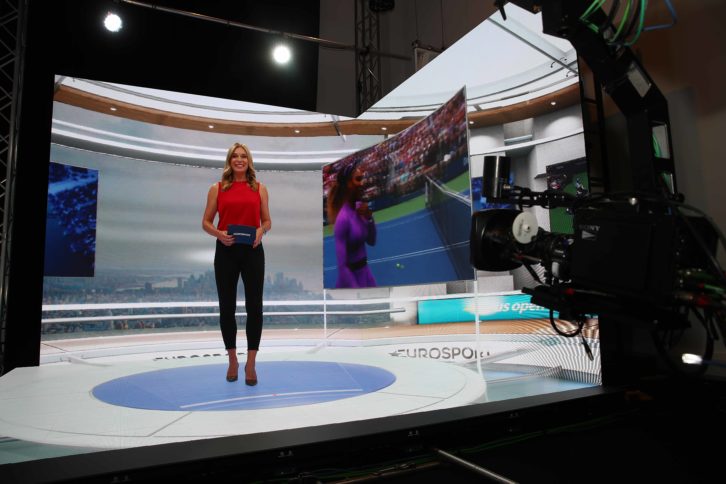
The biggest change in terms of the new version of the Cube has been the introduction of the Unreal games engine, which Eurosport asked Nikon and Dimension Studios to help with.
“From our perspective, coming in to do that, it was really great because Eurosport clearly outlined a fantastic set design and set us the challenge to not only make this design come to life, but also to give the level of interaction and control that they wanted,” explains James Banfield, head of Mixed Reality Solutions, Nikon and its partnership with Dimension Studios,
“[We wanted] it to look as realistic as possible to the untrained eye, so that the viewer at home would actually be spending more time engaging with what the presentation is showing. It was a really great challenge to take on. What the team has done is fantastic.”
According to Andy Hook, technical solutions director at White Light Ltd, who also worked on the project, removing one of the Cube’s walls was the biggest challenge as it meant the studio had a different feel. “To do that meant a fundamental change in the technology,” he explains. “Initially, the Cube was more akin to the current virtual production systems you see out there where everything is just shot inside the footprint of the LED video volume and the content is being generated to the perspective of the camera.”
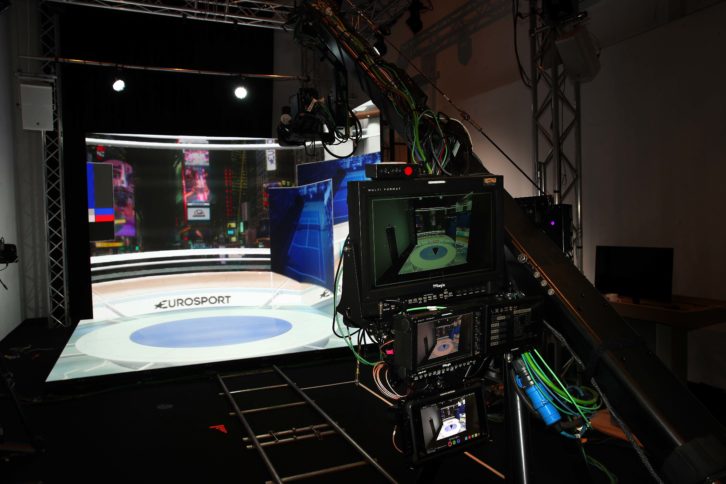
“Now, we really expand on that. We have a virtual set extension outside of the LED footprint so the camera can roam around wherever it wants within this digital environment. Where there’s video, content appears on the map so the presenters can actually see everything that is around them. We added a massive amount of flexibility by employing this huge virtual extension.”
He continues, “We still maintain the amazing advantages of the original Cube where the athletes can walk into the space with zero training and get that initial emotional connection with the content on the first take. They don’t need to be trained broadcast professionals; they don’t need to worry about the camera and the pressures of being live on TV. They can just focus on the content that is around them, but the camera can move around in this huge virtual environment. That’s now using the Unreal engine – the whole system is render engine agnostic. We can use the right render engine room for that specific part of the job, whether that’s AR graphics, a table or and the whole world behind you.
“Dimensions has built this incredible set that is fully interactive and we control the lighting in that world from the studio lighting desk,” adds Hook. “But the whole system is now unified. We’re not drawing on lots of different graphics systems, all feeding into the same things. We can calibrate it really quickly. It only takes a day or two to setup now. All calibration is done in a fairly autonomous way and it’s much easier to deploy anywhere around the world.”
In terms of how the players are teleported from Queens to London, the USTA has built a 3D studio, available to all host broadcasters, on site at Flushing Meadows where the players can be filmed in front of a green screen. “As soon as they mentioned the players were going to do their flash interviews in a green screen studio we asked for them to send the green screen feed down to us and we can then place them into our studio and we can send a return feed back to the player so they can see what we’re doing with them,” says Dinnin. “We send our return feed back to the US Open and they have very kindly put a courtesy monitor behind the camera in the player’s eyeline so they can see perfectly. There is a very minor issue with latency, but this is just due to distance from London to New York. I think it’s just over a second, which isn’t too bad!
“The biggest challenge of all is having about just under a minute to set up the key and the positioning of the player and the scale of the player, which is a challenge but one we’ve handled well.”
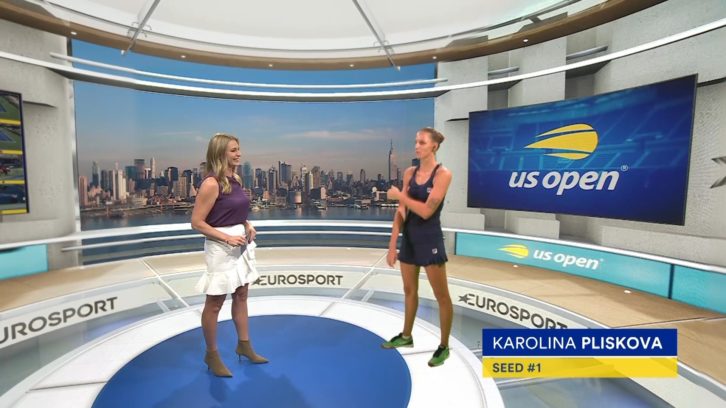
Dinnin adds that the reaction from both fans and players has been “really, really good. We’re really, really happy with it. For the viewer, I think this is the closest we could get to actually being there. We’re having live interviews with players, we’ve got this lovely, great screen behind our presenter, which shows all the action going on.”
“The players are always a little cagey, when anyone walks into a green screen they have no idea where they’re being put, but once they can see where they are the reaction is mainly: ‘Oh, wow, this is really cool!’ Our presenter Barbara Schett-Eagle always tries to help them relax and have fun with them. For them, it’s got to be more enjoyable than just standing in a boring press conference.”
“It’s really interesting to see on Twitter how many people are picking up on the virtual player appearing when actually everything that they’re seeing is virtual,” adds Hook. “It’s only because the player has got that animation that tells you they’re being beamed in, that the audience realises that’s cool because it’s virtual. But actually everything they’re saying is virtual. I think that’s what has really worked well at the US Open with just how well that’s come across on screen.”
Eurosport will employ the same technology for its coverage of the French Open at the end of September, and it will also be taken to Tokyo for next summer’s Olympic Games.
“There’s nothing better than being on site,” says Dinnin. “We don’t ever want to take that away. If we can go to the Australian Open, then we’ll probably package everything up. We can package it up and move it around. But if we can’t be there due to the circumstances, then being in London is the second best thing.”
Eurosport today launched the new Cube for our coverage of the US Open and we were thrilled to welcome number one seed @KaPliskova as our first-ever guest in the mixed-reality studio with @Babsschett after her first round win. pic.twitter.com/MC5Wrk6g7i
— Warner Bros. Discovery Sports Europe (@WBDsports) August 31, 2020
